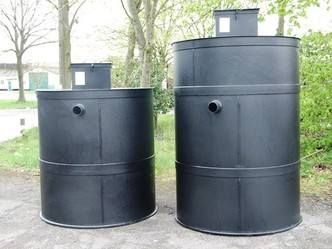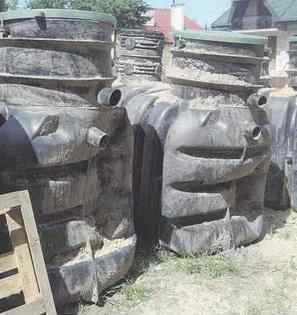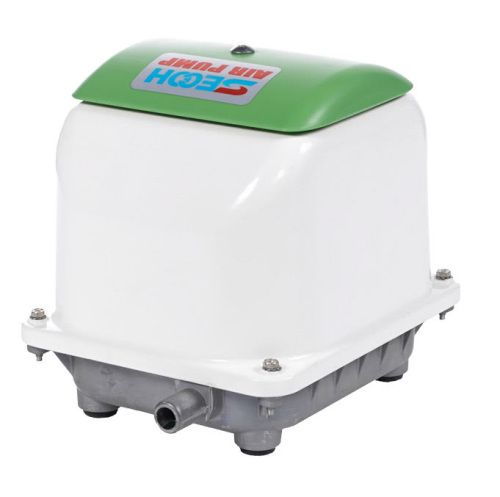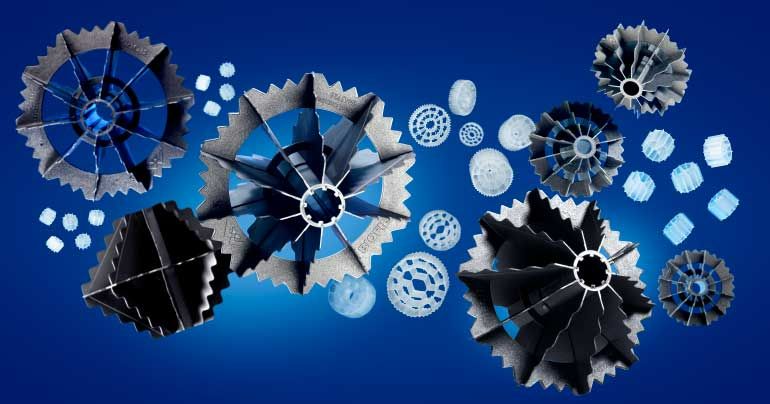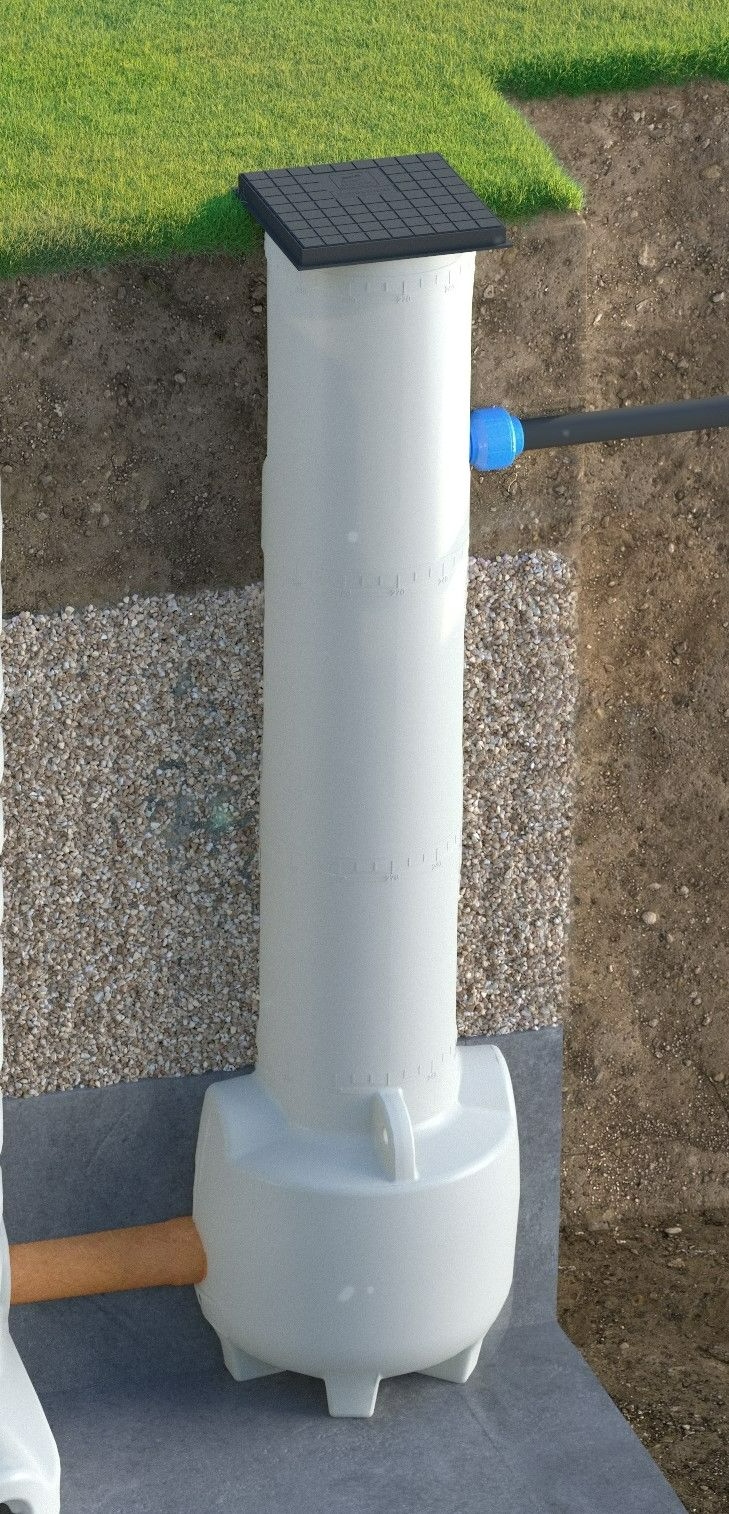If any of these economy-driven alterations to sewage treatment plants are done AFTER the EN12566-3 Test, then the system should be re-tested - but most cheap ones are not, as it is VERY expensive and the cost would need to be added to the tank price.
Sewage Treatment Plant Size
For the EN-12566-3 test, the smallest plant in the range is the one that must be sent for testing. This is because it is believed that the smallest tank size will be the one that gives the poorest performance results.
This SHOULD be true, if the treatment tank size is expanded in a linear fashion, i.e if a 4 person tank size needs to be 2000 litres, then an 8 person needs to be 4000 litres.
Unfortunately, what SHOULD happen with the design of the larger tanks, more often than not, doesn't. There are very few manufacturers who design their larger plants this way, as the larger plants do not need to be tested. These linear design ones tend to be the more expensive sewage treatment plants.
Instead, many manufacturers produce larger tanks that have smaller compartments throughout, thus making them cheaper to make and buy. As there is no testing required for these, they are not, officially, doing anything wrong, but the performance cannot be the same as the one stated on the EN-12566-3 Certificate and on the brochure. This is because the retention time for the digestion of the pollutants in the biozone also reduces as the volume per person reduces. If the tested plant had a biozone retention time of 50 hours, but the 20 person one has a retention time of only 26 hours, then there is no way that the sewage can be cleaned to the same degree.
This Is wrong.
This also costs you money. Everyone produces the same amount of sludge per day in a treatment plant. If the 4 person system needs emptying once a year, then a larger tank, with a smaller capacity per person, needs emptying more often, at a rate depending on the size reduction.
This, often vastly decreased emptying interval, needs to be explained to the customer, but often is not.
Tank Strength
There are 2 main tests done for the EN12566-3 Certificate
- Structural Test - Tests the strength of the tank - Expensive
- Performance Test - Tests the performance results of the sewage treatment - Very expensive
In our opinion, it has been a 'Race to the bottom' in tank quality over the past 10 years. As prices for sewage treatment plants has fallen, so has the thickness of some of the tank walls, as thinner walls are cheaper.
Tank wall thickness varies a lot from one make to another and in some cases, the EN Test was done using the thicker walled tanks that were produced at the time. Many were not re-tested when the wall thickness was reduced, or the tank design was altered, although this should have been done, according to the rules.
Also, there must be no change in the polymer or resin used for the tank construction. Changing to a cheaper one will, invariably, alter the structural strength of the tank. Any change in the material used must result in a new Structural Test being done - but, in many cases, it is not, due to the cost.
The Structural and Performance Tests cost a lot of money, which then would have to be passed on to the price of the sewage treatment plant.
VORTEX sewage treatment plants have a tank wall that is 10mm thick. Ask our competitors how thick theirs are?
Air Blower
Many sewage treatment plants were tested with different air blowers to the ones currently sold with the systems.
The price of air blowers varies a lot from one manufacturer to another and, in general, the price is reflected in the quality of the blower.
The amount of air that a blower supplies to the diffuser in the biozone varies even when the blower ratings appear the same? The cheaper blowers tend to supply less air to the diffusers than the more expensive ones, as the back pressure increases with depth of the water. Cheaper blowers tend to have less 'blowing power', but they do enable a price reduction for the plant.
It has been known for some manufacturers to bring out an 'Eco' version of their tested plant, which simply has a cheaper, smaller blower supplied, but claims the same Test Performance Cerificate. It is the same as testing a 2 litre car and swapping the engine for a 1 litre one and claiming the same performance. Yes, it might do more MPG, but will not perform the same.
If your plant was tested with a quality blower, but the blower that is supplied with the plant is one of the cheap ones, then the EN Performance Certificate is meaningless.
Cheap blowers also tend to be more noisy.
Make sure that the sewage treatment plant that you buy has the same blower supplied as the one it was tested with - many don't - and the Performance Certificate is then meaningless.
Media Changes
All 3 stage sewage treatment plants rely on Media to supply the surface area for bacteria to grow on and this affects the ability of the bacteria to establish a healthy, robust colony.
The price of different media also varies enormously, as does the surface area available per cubic metre, for bacterial growth.
Some plants were tested with one media, but changed to another cheaper one, when the plants were on the market, to enable a price reduction.
WTE has independently tested seemingly identical media at the EN Test Centre, PIA, Aachen, which, on paper, had the same Tech. Specs. but the cheaper one didn't work at all. The more expensive one gave fantastic results however.
The media from some manufacturers is available in different materials. Some materials are cheaper than others. The performance of different materials is not the same; we know, as we have tested them. Sewage treatment manufacturers could change the media to one from the same supplier, made in the same mould, that looks identical and you would only be able to establish that this media was different by doing laboratory analysis on the polymer used.
Make sure that the media your tank is supplied with is the same one that it was tested with, or the Performance Results are meaningless.
Air Diffuser Changes
All sewage treatment plants rely on air diffusers to supply the air for the areobic bacteria to breathe.
There are many different types and makes of these diffusers and the price also varies enormously.
The important thing about any diffuser is that it is able to provide minimum resistance to the air blowing through it. If the resistance is low, then more air escapes through it and the bacteria get more oxygen. They can then grow rapidly and digest more of the pollutants in the sewage. Unfortunately, these diffusers tend to be the expensive ones.
Changing the diffusers to cheaper ones, which often have more resistance, severely affects the plant performance and the increased back pressure also shortens the life of the air blower.
Make sure that the air diffusers in your sewage treatment plant are the same ones that it was tested with, or, again, the Performance Results are meaningless.
Integral Pumped Outlets
For the EN12566-3 test, all sewage treatment plants are tested without integral sewage pumping chambers in the final settlement, or clarifying chamber.
The volume of the final settlement chamber is designed to be the correct size to allow enough retention time for the sewage effluent to remain there and settle out the fine solids and humus that still remains in the sewage water.
So why do some manufacturers insert a pumping chamber into this final settlement chamber, when it reduces this essential settlement volume requirement for clarification? The total volume taken up by the pumped outlet variants can be up to 20%?
Because it is cheaper.
It is cheaper to sit a pumping chamber into an existing tank than to supply a seperate pumping station in its own small tank, but the amount of settlement needed for the plant to perform to the same level as the tested one cannot be the same and neither can the quality of the final effluent.
Seperate pumping stations are also easier to work on when the pump needs changing.

